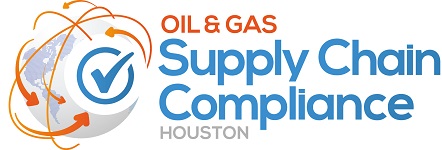Day One
Wednesday April 26, 2017
Day Two
Thursday April 27, 2017
Exploring the Impact of Working with Pared down Resources on Mitigating the Most Important Financial & Reputational Risks in the GSC
08:50 Day One Chair’s Opening Remarks
09:00 Opening Panel Debate: How Corporate Restructuring during the Downturn Has Impacted Our Ability to Mitigate Financial & Reputational Risks in the Supply Chain
Synopsis
• Overcoming challenges of doing more with less, including leveraging existing due diligence and other processes in the supply chain
• Integrating new process and technology improvements: Success stories that have enabled
more effective due diligence and compliance across the global supply chain
• Strategies for obtaining necessary resources and how to decentralize resource-intensive
tasks across other parts of the organization to improve controls
• How have suppliers, vendors, distributors and other third party partners responded to the
pressures of reduced resources?
• Aligning the compliance mission more closely with internal supply chain and external
3PLs, suppliers, distributors and other partners
• Positioning for the upturn. What practical steps are we taking now to be future-ready?
09:40 Case Study: One Size Fits All? Developing a Robust Vetting ProcessThat Supports the Nature & Risks to Your Business from YourGlobal Supply Chain Partners
Synopsis
• Ensuring due diligence and compliance strategies are applied efficiently across the supply
chain and work with the time-sensitive nature of the supply chain
• Understanding risk appetite and mitigation. When have you done enough due diligence for
your business?
• What is the minimum level of compliance you should set your sights on for regulators and
agencies – and how do you build up from there?
• Living outside of the ‘hard and fast rules’ box. Where does there need to be flexibility in
your programs to prioritize resources that cost-effectively mitigate risks?
• Ensuring your compliance programs focus 3rd party due diligence on higher risk
distributors and other entities, along with mitigating 2nd tier and smaller
subcontractor risks
• Communicating due diligence outcomes more effectively with vendors, suppliers
and distributors
10:10 Speed Networking & Morning Refreshments
11:10 Keynote Presentation: A Focus on the Minutiae of SEC Guidelines for FCPA
Synopsis
• Highlighting the areas that the SEC are paying particular attention to in the oil and gas
sector and where are risks increasing
• What are the main emerging dangers that the supply chain exposes you to in terms of compliance?
• Exploring some practical actions you should take to avoid running afoul of SEC regulations
11:40 Panel Debate: Understanding How the Evolving International Regulatory Landscape Is Impacting the Oil & Gas Supply Chain & Meeting These Challenges Head On
Synopsis
• The impact of increasing international cooperation by law enforcement agencies and
regulatory bodies
• Decoding the additional ‘flavors’ to regulations and better interpreting these regulations
to understand the risks to your business
• The nuances of the law: Understanding where tenders or specific business is impossible
to secure and where it’s dependent on your risk appetite
• Enhancing your programs and supply chain processes accordingly to protect against
potential enforcement actions
• What are the internal controls that regulatory bodies such as the SEC consider appropriate and what do they consider a violation of internal controls?
• How should you defend yourself most effectively during an enforcement action?
• Regional focuses on compliance. E.g. Latin America (the turning tide in Brazil, opening up
of the Mexican market)
12:30 Lunch
Demonstrating Real Value through Improved Programs & Technologies That Minimize Exposure to Enforcement Actions
14:00 Case Study: Exploring the Challenges of Tracking the Movement of Capital Assets That Are outside the Usual Inventory Listings of Your ERP during a Period of High Relocation/Consolidation
Synopsis
• Understanding which equipment may have dual use with prohibited classification through coordinating across the business to create classification lists for dual use
or prohibited assets
• Ensuring enough forward planning for comprehensive technical analysis of assets
• Working with management to sensitively receive information you require without unnecessary detail that would prevent disclosure
14:30 Aligning Due Diligence to Ethical Sourcing Goals
Synopsis
- Effective Third-Party Due Diligence
- Identifying the Key Benefits of Ethical Sourcing
- Mitigating the Risk of Conducting Business with Unethical Third Parties
- Beneficial Ownership and Unraveling Complex Business Structures
15:00 Afternoon Refreshments & Networking
15:40 Case Study: Successfully Protecting Your Business from Regulatory Enforcement through Better Due Diligence & a Culture of Compliance
Synopsis
• Lessons learned on the journey: Preventing compliance violations in the first place through a strong and thorough due diligence program
• Better identification of parties to conduct due diligence in the onboarding process
• Expanding mission to other risk categories, including lower risk and 4th party logistics
• Ensuring existing controls in place enable effective operations
• Embedding and managing a culture of compliance throughout the business
16:10 Case Study: Conducting an Internal Investigation & Ensuring Accountability Post-Investigation
Synopsis
• A journey through the internal investigation process
• Working collaboratively with auditors, investigators, attorneys and outside counsel
• Holding employees accountable and ensuring that discipline aligns with organizational
and compliance culture
• Incorporating lessons learned and driving compliance solutions across the business





